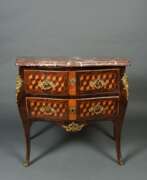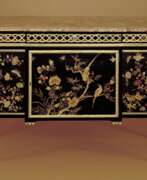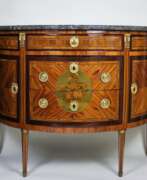Period of Louis XVI 18th century


Martin Carlin was a Parisian ébéniste (cabinet-maker). Renowned for his "graceful furniture mounted with Sèvres porcelain", Carlin fed into the luxury market of eighteenth-century decorative arts, where porcelain-fitted furniture was considered among "the most exquisite furnishings" within the transitional and neoclassical styles. Carlin's furniture was popular amongst the main great dealers, including Poirier, Daguerre, and Darnault, who sold his furniture to Marie Antoinette and many amongst the social elite class.


Jean-Charles Ellaume was a French cabinetmaker.
The craftsman produced numerous pieces of high-quality furniture, mainly chests of drawers and desks, in the Louis XV, Regency and Louis XVI styles. The bronze decorations are elegant and finely chiselled and some of the furniture is decorated with inlays.
Many pieces of furniture are known to bear his stamp.


Jean-François Leleu was a leading French furniture-maker (ébéniste) of the eighteenth century who was trained alongside his rival Jean-Henri Riesener, in the workshop of Jean-François Oeben. After his master's death, he became the workshop's lead and became a master ébéniste in 1764. Leleu had the patronage of wealthy aristocrats, including the Prince de Condé, Louis-Joseph de Bourbon. His furniture was known for its high quality, elegance, and restraint, with inlays of diamonds, roses, or floral bouquets. When working for marchands-merciers, he also used inlays of Sèvres porcelain and lacquer. Leleu's clients included the Prince de Condé and Madame du Barry.


Jean-René Nadal Senior was the eldest son of seating furniture manufacturer Jean Nadal and the daughter of his colleague Jean Cresson. He is also the brother of Jean-Michel Nadal, who himself was a furniture maker. Nadal owned a workshop on the Rue de Cléry, probably inherited after his father's death, and opened a shop on the same street called "Lion d'Argent".

































